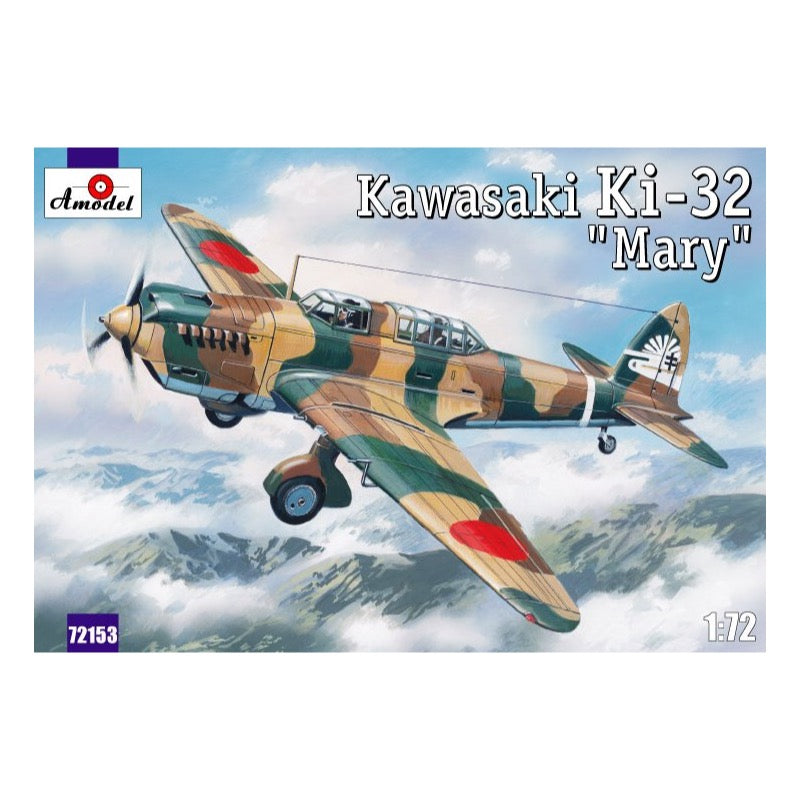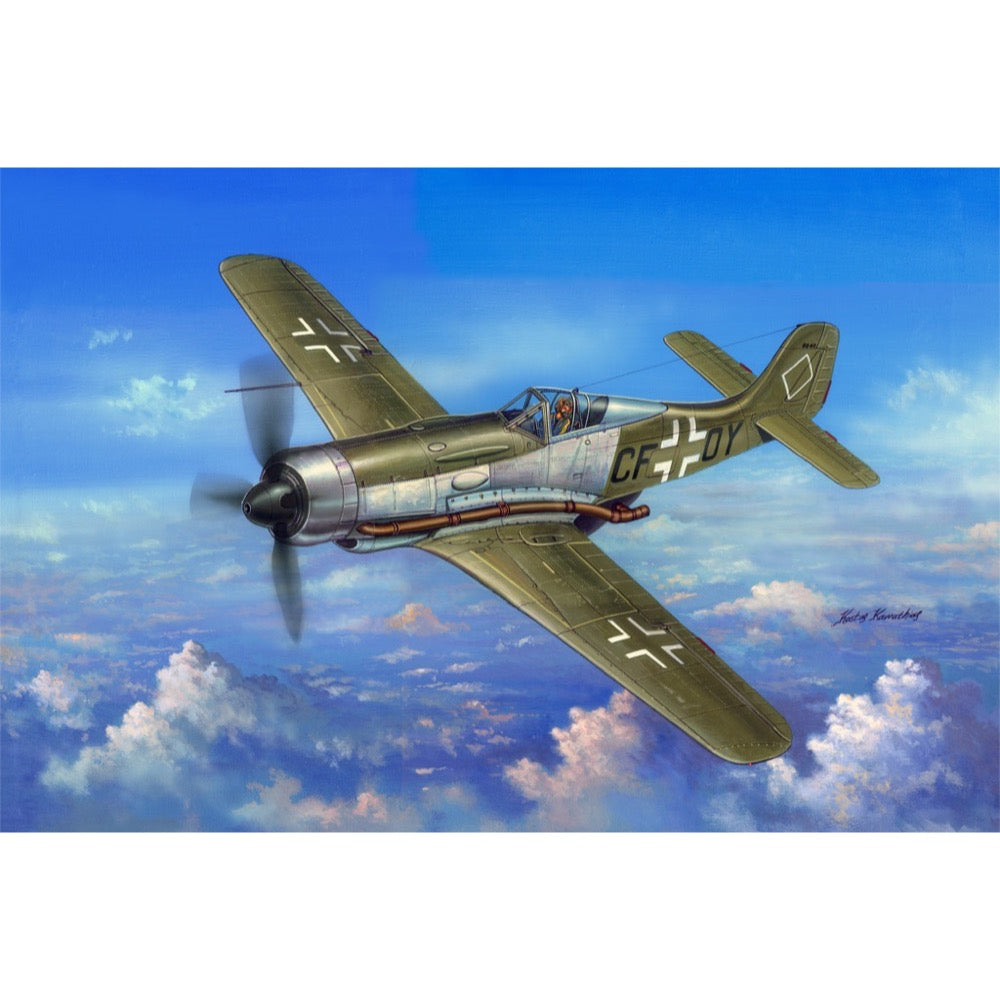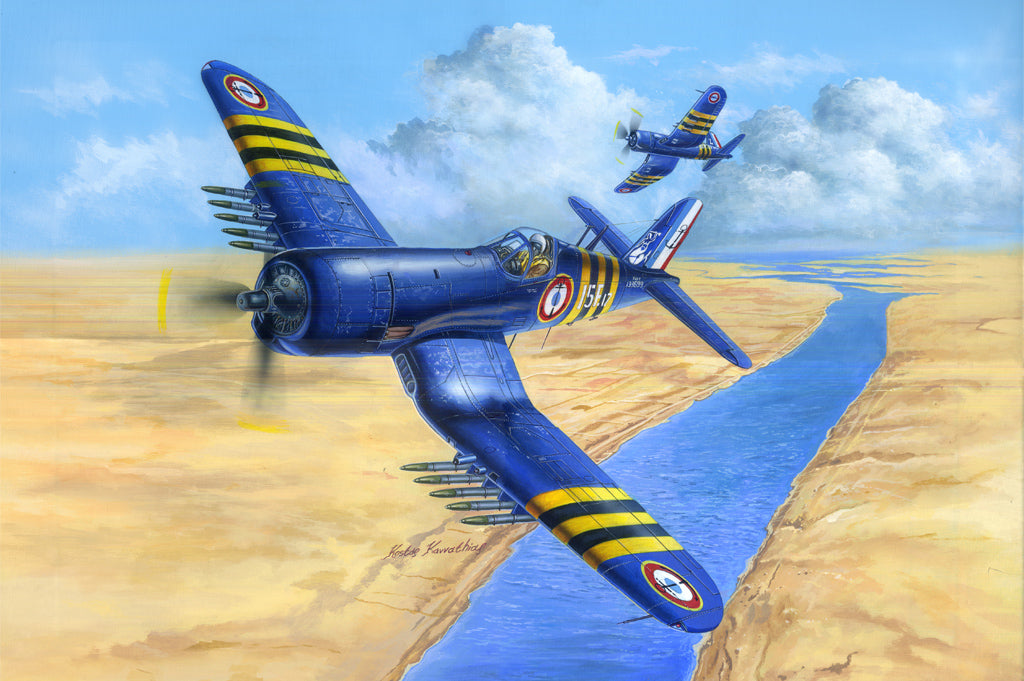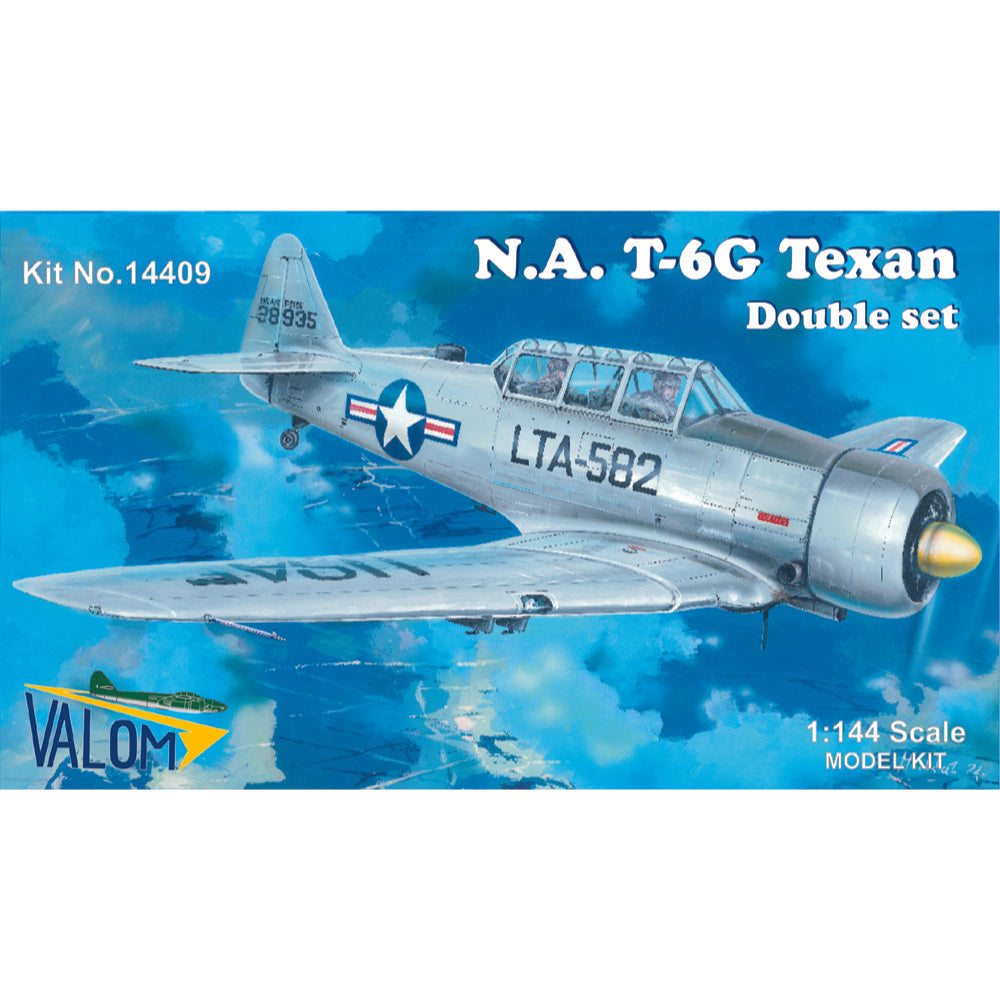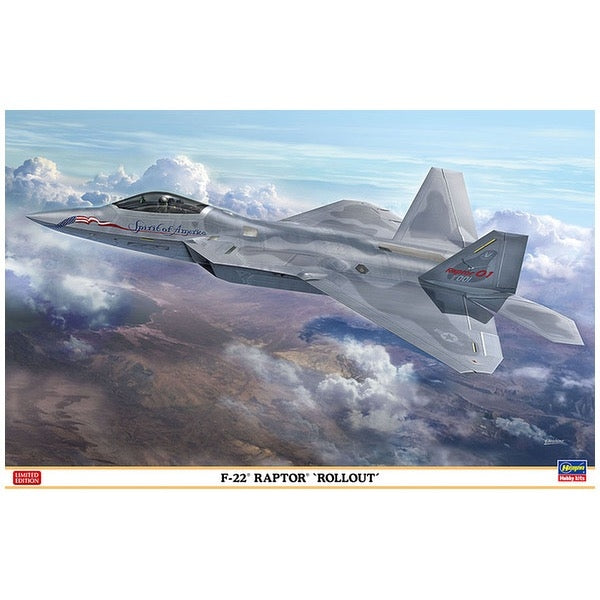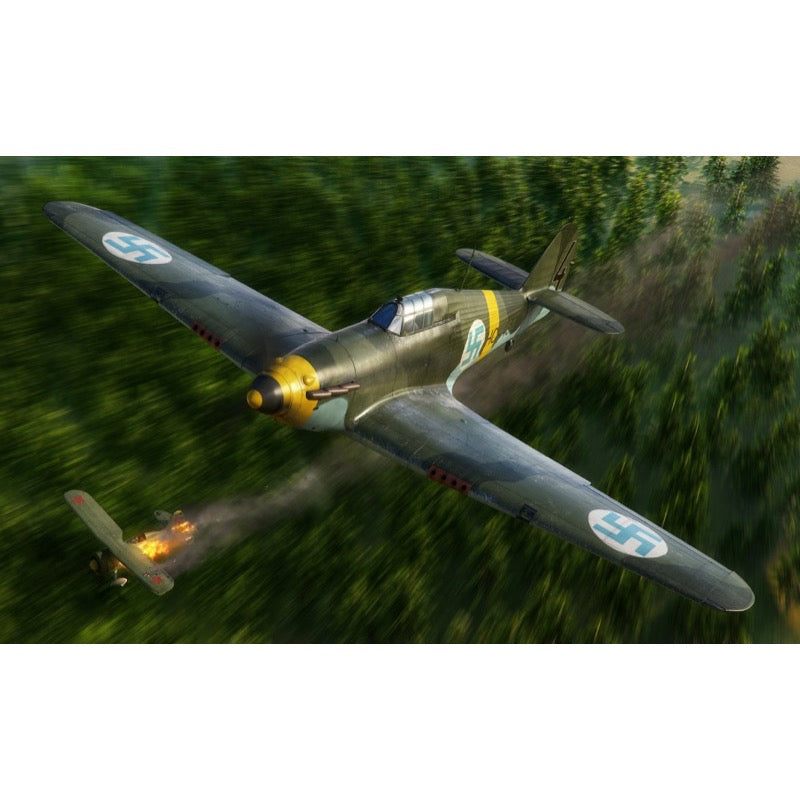
Roden 609 1/32 Sopwith Triplane
35.00
$
<h3>Roden 609 1/32 Sopwith Triplane</h3>
<p>The Sopwith Triplane ‑ known to its Royal Naval Air Service pilots as the “Tripehound” ‑ was developed from the biplane Pup in late 1916. The purpose of the triplane configuration was to maximize pilot view with narrow‑chord wings and maximize maneuverability by increasing wing area without increasing wingspan. The result was a supremely maneuverable single‑seat scout that had such a profound effect on its opponents that they paid it the ultimate compliment of copying it ‑ directing all German aircraft manufacturers to submit designs for triplane fighters within weeks of the appearance of the Tripehound over the Western Front in the Spring of 1917. The Triplane was generally about 15 m.p.h. faster than the Albatros D.III and could easily outclimb its opponent; if the German chose to attack, the Triplane could out‑turn the Albatros quickly, then outclimb it, thus allowing the RNAS pilot to choose his moment of attack.</p>
<p>Flown by such famous RNAS pilots as the Canadian Raymond Collishaw, American O.C. “Boots” LeBoutillier, and Englishman Reggie Soar, the Sopwith Triplane went far to re‑establish British air superiority in the northern region of the Western Front following the disaster of “Bloody April.” Powered by the 110 h.p. Clerget engine, the fighter suffered from a standard armament of only one Vickers machine gun, though both Collishaw and Bob Little flew a limited‑production series of Triplanes armed with two machine guns despite the deleterious effect on performance from the extra weight of the additional weapon.</p>
<p>Such was the pace of technical development that the Triplane, which first appeared at the Front in February and only achieved widespread service in all four RNAS fighter squadrons ‑ Naval 1, naval 8, Naval 9 and Naval 10 ‑ by May, was considered obsolescent by late July and left front‑line service by the end of August, 1917. Replaced by the tricky Sopwith Camel, the Tripehound was remembered by its pilots as a wonderful flying machine.</p>
<p>The Germans paid the Sopwith Triplane the honor of copying it, with the better‑known Fokker Triplane being developed from a requirement issued in direct response to the success of the Triplanes. Unlike the Tripehound, which had ailerons on each wing, the Dr.I only had ailerons on the upper wing, meaning the other two wings had to be dragged through maneuvers. The Sopwith could fly rings around Fokker's legendary fighter. Of course, by the time the Dr.I appeared, the air war had changed and the airplane was essentially obsolete for air combat from its first day on the front, though it would soldier on with the Fliegertruppen until May 1918, with a few still flown by individual aces until the end of the war.</p>
<h3>Decals</h3>
<ul>
<li>
<p>Sopwith Triplane N5493, No.8 (N) Sqn RNAS, St. Elois, France, Western Front, flown by Capt. Robert A Little, Summer 1917.</p>
</li>
<li>
<p>Sopwith Triplane N533/C, "Black Maria", No.10 (N) Sqn RNAS, Drogland, France, Western Front, flown by Lt. Col. Raymond Collishaw, leader of the "Black Flight", July 1917.</p>
</li>
<li>
<p>Sopwith Triplane N5382 "The Ooslumburd", Home Defence, Manston War Flight, Kent, July 1917.</p>
</li>
<li>
<p>Sopwith Triplane N5384 "White 9", French Naval Service F.11/SP.9,Western Front, France, Dunkerque, flown by S/Lt Charles Delesalle, February 1917.</p>
</li>
<li>
<p>Sopwith Triplane N5486 ShK1 from the Moscow Aviation School. This a/c was attached to the Special Aviation Group (AGON), used for fight with General's Mamontov Cavalry. Russian Civil War, Southern Front, Zhdanka r/w station, flown by Red Military Pilot Jury Bratolyuboff, August-September 1919.</p>
</li>
</ul>
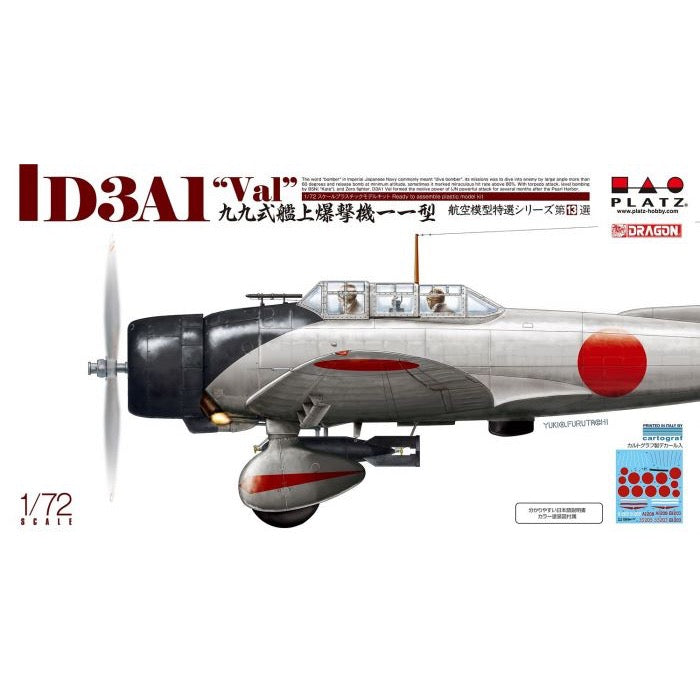
Platz 1/72 Aichi D3A Type 99 Model 11
31.00
$
<ul>
<li>This is an injection-plastic aircraft model kit</li>
<li>Requires plastic cement and paint for assembly</li>
</ul>

Roden 443 1/48 Pilatus PC-6B RAAF Markings
23.00
$
<p>In 1959 the Swiss company Pilatus Aircraft built a single-engined light utility aircraft, the PC-6 Porter, with a Lycoming GSO-480 340 h.p. engine. The aircraft was built in relatively small quantities (72 units), but its construction, despite its basic nature, had great potential for a variety of tasks. Two years later there appeared the PC-6A Turbo Porter with a 520 h.p. Turbomeca Astazou engine which was better than its predecessor in all major performance indicators. Later, another engine was installed in the aircraft - the 550 hp Pratt & Whitney Canada PT6A. Now there were individual pilot doors on both sides of the fuselage in the PC-6B version, in addition to sliding side doors, which facilitated departure from the airport or evacuation of the cockpit in the air in case of emergency. As in the PC-6A, the nose displayed a characteristic straight and elongated shape. In the modified PC-6/B2-H2 a 680 horsepower engine was installed, which greatly improved the aircraft's capabilities.</p>
<p>The turbo-prop PC-6 quickly became popular among pilots, and the plane began to be exported outside Switzerland to many countries on different continents of the world. In 1963 several military arms in the United States were interested in it, and later in that same year a PC-6A was purchased for testing. Subsequently Fairchild Hiller Aircraft Corporation received a license to build the PC-6 in the U.S. A small number were completed as light strike aircraft (AU-23 Peacemaker); and the conventional PC-6B, which was used as a light transport for small quantities of people or cargo, was designated the UV-20A Chiricahua in the U.S. Army. Some of these machines have served not only in the U.S.but also abroad, as for example, with the American forces stationed in West Germany during the time of the Cold War. They were later returned to the U.S., where they are still used as vehicles for groups of parachutists.</p>
<p>In North and South America, the United States was not the only country which had the PC-6 in its inventory. Argentine Naval Aviation still flies the type today, patrolling the ocean coast. And the PC-6 is in service in Bolivia, Colombia, Ecuador and Mexico.</p>
<p>There were 19 PC-6 machines belonging to the Australian Air Force and they were extensively used, even during the Vietnam War, dropping Special Forces Groups directly into major combat zones. Also, the PC-6 was useful in evacuation of wounded men from the battlefield, transportation of partisan groups, covering withdrawal from the battlefield, and so on. In less than two years of service with Australian troops in Vietnam, PC-6 pilots carried out nearly seven thousand combat sorties, losing only one aircraft. After the withdrawal of U.S. forces from Vietnam, some Australian PC-6's were transferred to the "Air America" airline, while others were taken back to Australia, remaining as part of the country's Air Forces until 1993. After decommissioning almost all of them gained new private owners, and they are now frequent guests of various Air Shows.</p>
<p>Half a century after its first flight, the PC-6 is still in military and civil service in many parts of the world, joining the same rare club as such famous aircraft as the Piper Cub or the Antonov AN-2, proving that sometimes a machine which at first sight seems basic and simple in design, can outlast many of its more sophisticated and advanced brethren.</p>
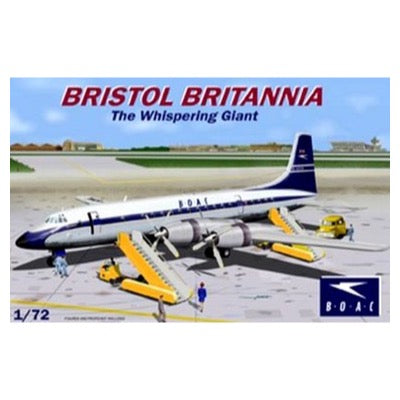
Mach 2 GP086 1/72 Bristol Britannia BOAC Version
54.00
$
<p>High quality, precision plastic model kit. Paint and glue not included. Requires assembly and painting. For intermediate to advanced skill modellers.</p>



